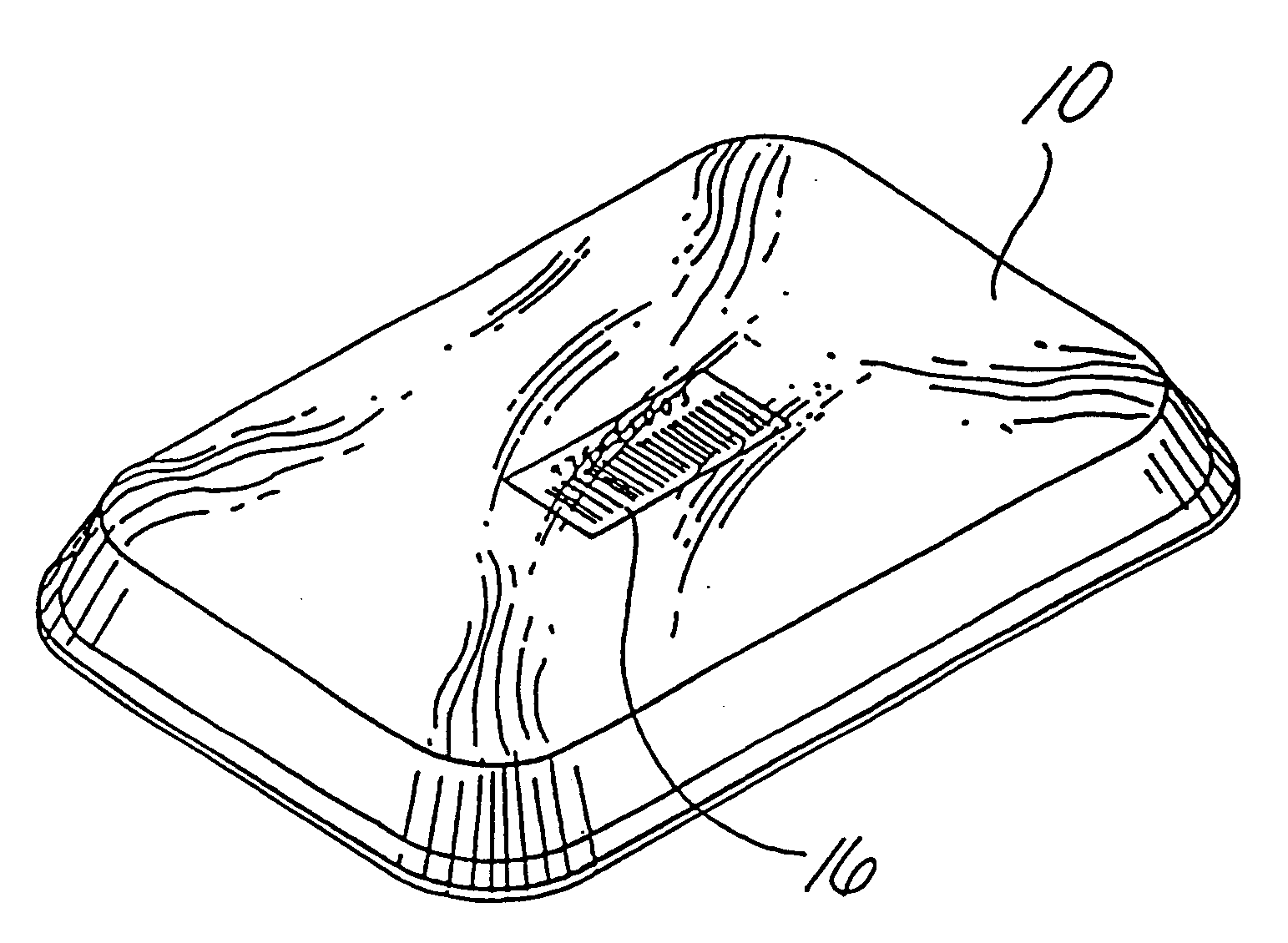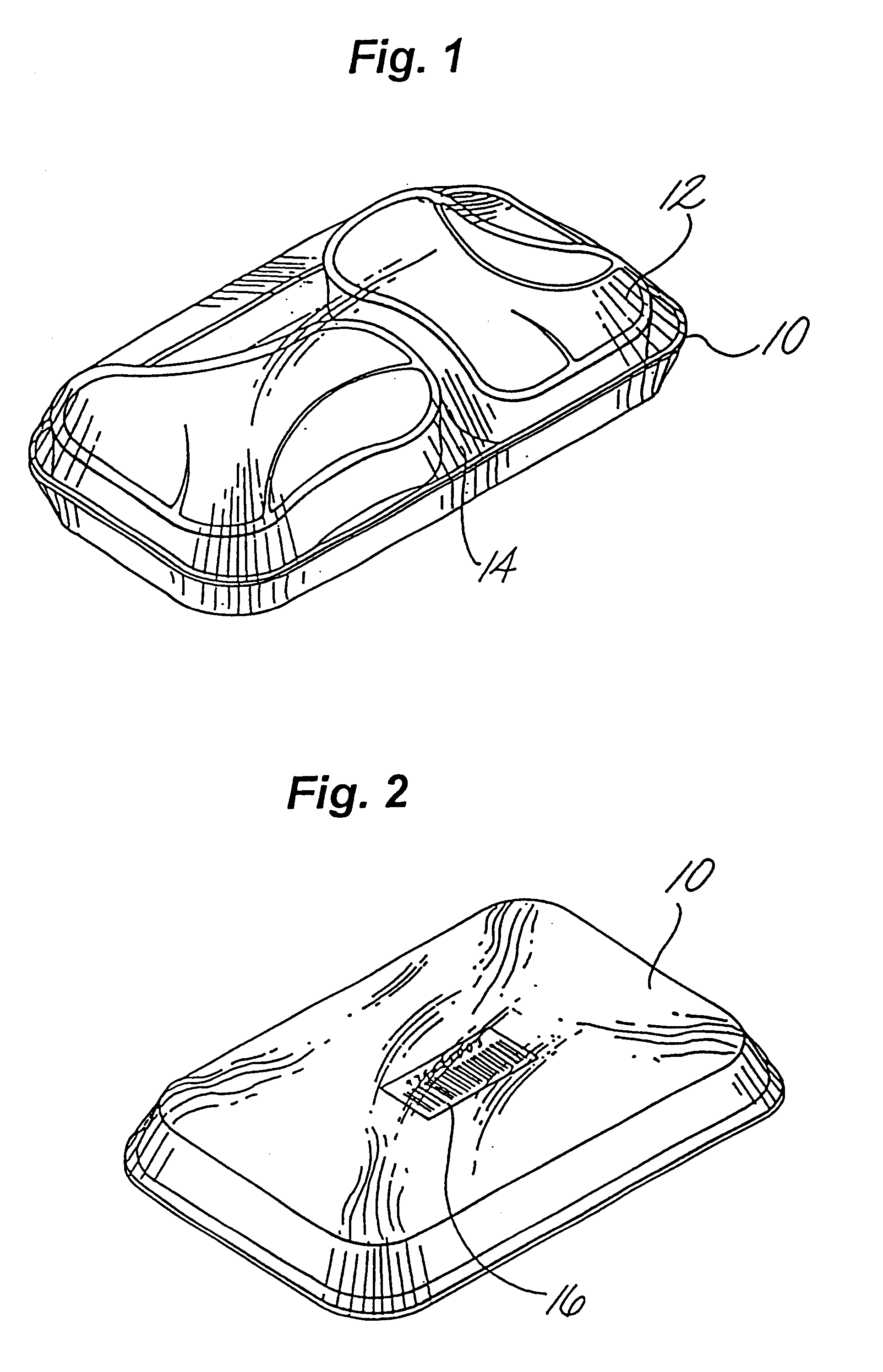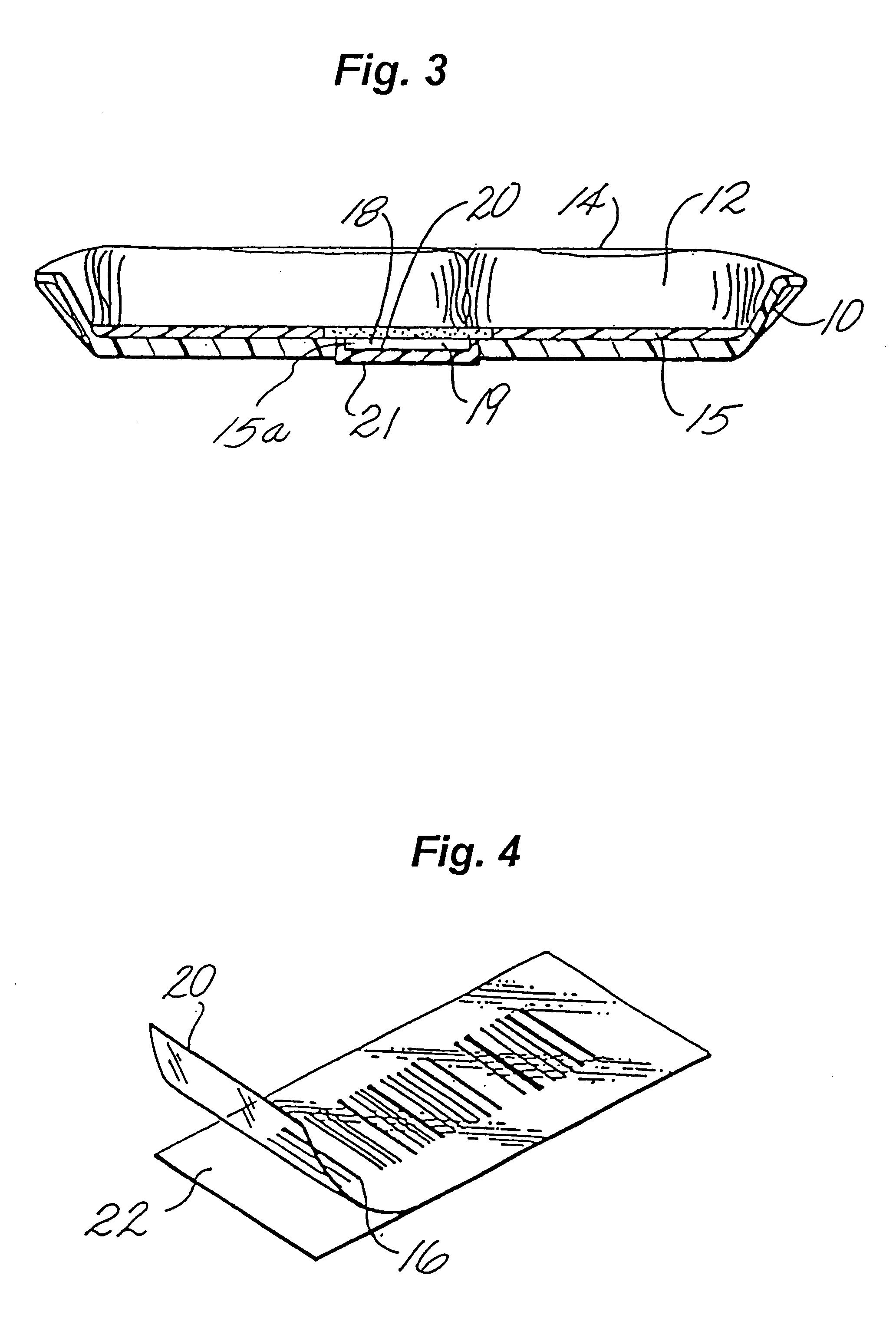Detection of contaminants in food
a technology of food contaminants and detection methods, applied in the direction of chemical indicators, instruments, fire alarms, etc., can solve the problems of contamination of food products, and contamination of raw meat, and the development of serious contamination of food products
- Summary
- Abstract
- Description
- Claims
- Application Information
AI Technical Summary
Problems solved by technology
Method used
Image
Examples
Embodiment Construction
The present invention uses an indicator which may be in the form of words, symbols, a bar code, coded indicia, or part of a bar code or coded indicia that identifies a product at point of purchase, sale, or distribution as a detector system. The detector system disclosed herein is particularly adapted for use as a food detection system for detecting conditions indicative of contamination that may be present in food products, including bacterial metabolites, toxins, and other secretions. In alternative embodiments, ordinary flexible packaging film, such as commercial polyethylene produced under the registered mark SARANEX.RTM., may be transformed into a composite material containing multiple sites per unit of surface area which can detect and identify multiple toxic microbial materials in a food package using the TOXIN GUARD.TM. system developed by Toxin Alert Incorporated and Skye Pharmatech Incorporated.
This toxin-detecting packaging can be used in conjunction with the bar-code sym...
PUM
 Login to View More
Login to View More Abstract
Description
Claims
Application Information
 Login to View More
Login to View More - R&D
- Intellectual Property
- Life Sciences
- Materials
- Tech Scout
- Unparalleled Data Quality
- Higher Quality Content
- 60% Fewer Hallucinations
Browse by: Latest US Patents, China's latest patents, Technical Efficacy Thesaurus, Application Domain, Technology Topic, Popular Technical Reports.
© 2025 PatSnap. All rights reserved.Legal|Privacy policy|Modern Slavery Act Transparency Statement|Sitemap|About US| Contact US: help@patsnap.com



